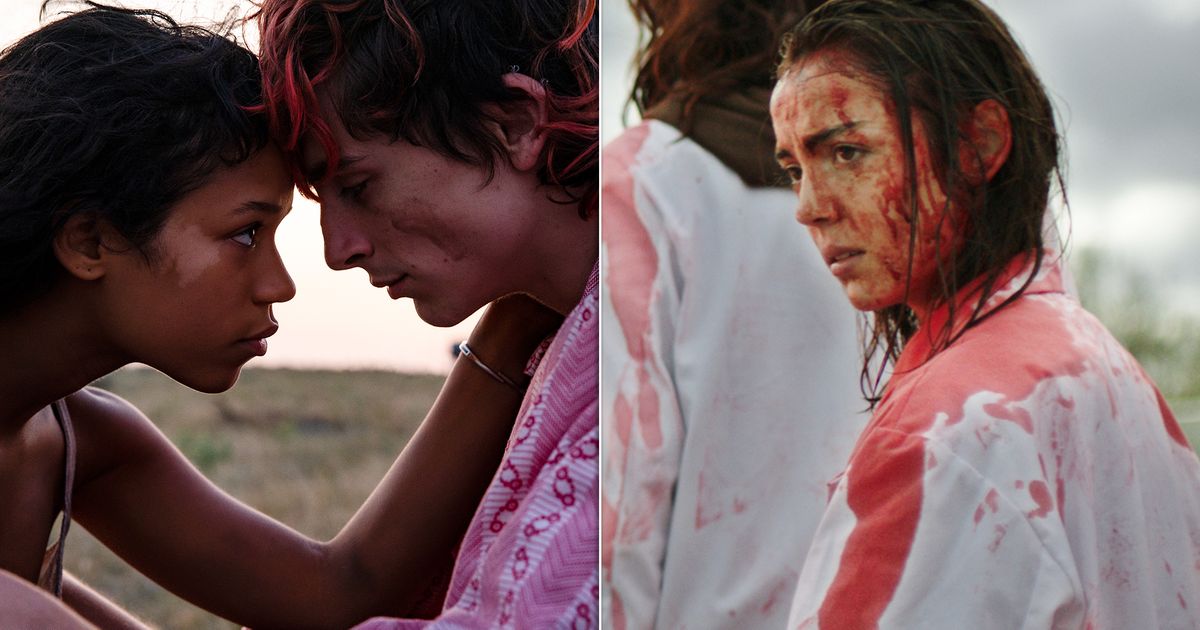“I’m sure you’ll find a solution, honey.” These are the last words in director Julia Ducournau’s 2016 film “Raw,” spoken by the father of Justine (Garance Marillier), an aspiring veterinarian and a cannibal. He says this after he reveals his bare chest, filled with old bite marks and scars left by her mother in familiar fits of passion.
His bewildering statement is as much a gentle cry for help as it is a chilling confession that his daughter has the same carnal predilection as her mother — and that it will continue unless she finds another outlet.
This scene comes to mind after watching “Bones and All” at the New York Film Festival this month. Director Luca Guadagnino’s new film also centers a young woman named Maren (Taylor Russell) who simultaneously navigates new adulthood and the realization that she has an unruly hunger for human flesh. Is it a condition, a desire, or something else altogether?
Neither film seems particularly interested in answering that question, which makes them both intriguing and — pardon the pun — difficult to digest. (Though if you consider this 2003 New York Times article, you might be more inclined to believe that it’s a trait that can be inherited from your parents.)
©2016 PETIT FILM/ROUGE INTERNATIONAL/FRAKAS PRODUCTIONS
And for what it’s worth, we learn that Maren’s mother, like her counterpart in “Raw,” is also a cannibal.
What makes both films so curious and enchanting, however, is how they examine a young woman’s coming of age, when she’s out on her own for the first time and contending with the new spaces she finds herself in ― love and relationships, being away from home, making decisions for herself.
For Justine and Maren, that also means discovering you’re a cannibal.
There’s a reason why the possibility of a solution to Justine’s people-eating is left for the end of “Raw.” The film is more about who she is: a lifelong vegetarian, a new student on campus who grapples with hazing (she’s forced to eat raw meat), a young woman drawn to an enticing young man along with the drinking and clubbing scenes.
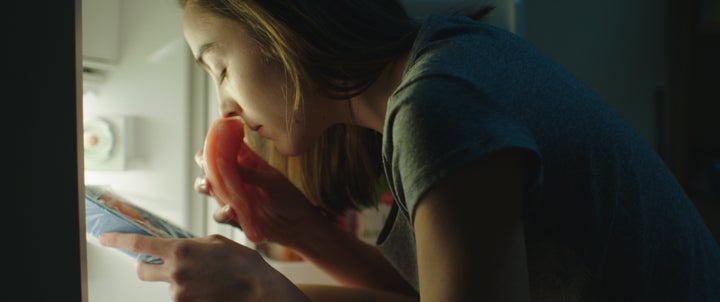
©2016 PETIT FILM/ROUGE INTERNATIONAL/FRAKAS PRODUCTIONS
The further Justine departs from what is familiar to her, the more she descends into what appears to be her cannibalistic nature.
“Bones and All” doesn’t try to reckon with this unusual trait either, putting an even finer point on how cannibalism is used in these two films. In more typical horror fare such as “The Silence of the Lambs” and “The Texas Chain Saw Massacre,” it’s often about shock value and shows up in characters firmly established as villains.
But in “Bones and All” and “Raw,” these young, female cannibals are unquestionably the protagonists, and it seems less about what they do — feast on the human body — than about the way they fit into their surroundings and society at large. They manage to engage in this thirst with virtually no consequences.
No one is thinking about a young, female cannibal. Instead, it’s the fact that they’re isolated and alone that makes them most vulnerable. They tread along the margins of society at a critical point in their lives when they don’t have all the answers.
It’s what makes them so interesting to watch. Because you can see that being true for a cannibal, and also an experience most women would find very recognizable.
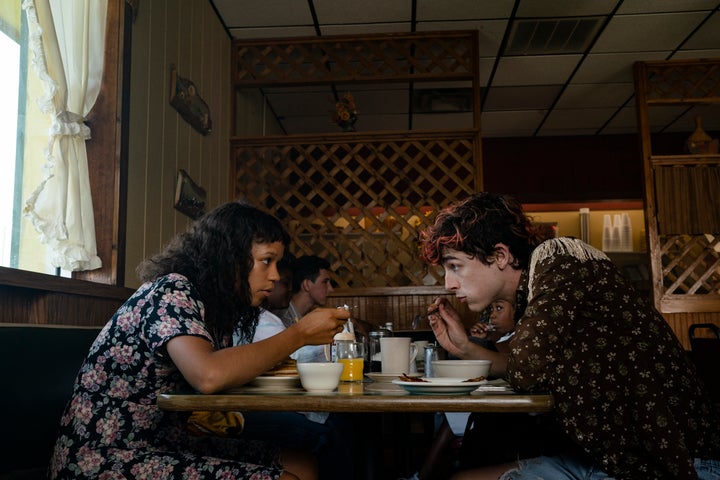
Yannis Drakoulidis/Metro Goldwyn Mayer Pictures
That achievement, or at least the conversation both films strike up, is surprising. Because unlike Ducournau, neither Guadagnino nor screenwriter David Kajganich has the gendered experiences to fully understand a young woman’s journey (they’ve adapted the film from Camille DeAngelis’ 2015 novel). And certainly not that of a young Black woman like Maren.
And yet there’s an awareness that permeates “Bones and All.” Like Justine, Maren is suddenly and brutally awakened to the fact that she is a cannibal, and that she is considered in equal parts dangerous and in danger.
That’s not a totally bizarre thing to see in a horror film. For an example that screams “coming of age can be a real nightmare for young women and everyone around them,” 1976’s “Carrie” comes to mind.
But in the cannibalism subgenre to which “Bones and All” and “Raw” belong, the horror of the act is decentered, and the filmmakers seem to wrangle with its more metaphorical meanings tied to coming of age.
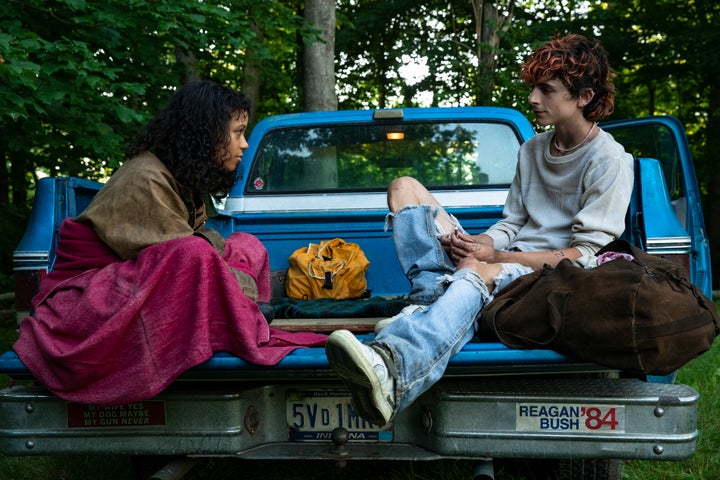
Yannis Drakoulidis/Metro Goldyn Mayer Pictures
For instance, within the first few moments of “Bones and All,” Maren is enjoying herself at an otherwise typical teenage sleepover when she takes her friend’s finger, with its nail newly polished, and bites it off.
She’s horrified by her inclination and runs to her father (André Holland), who is all too accustomed to her habit. He’s been covering up her cannibalism for years and soon abandons her out of fear and frustration.
Maren is determined to find answers, though not in the form of a solution to her problem. Rather, she wants to know where this came from, and to figure out where she wants to go. Heading on a cross-country road trip, she is isolated because she’s a cannibal in a world seemingly filled with non-cannibals.
It isn’t until she encounters Sully (Mark Rylance), an unhinged male counterpart, and Lee (Timothée Chalamet), a compassionate loner like herself with whom she finds love, that her world begins to open up. And the perils of young adult life as both a cannibal and an average human woman appear to blend.
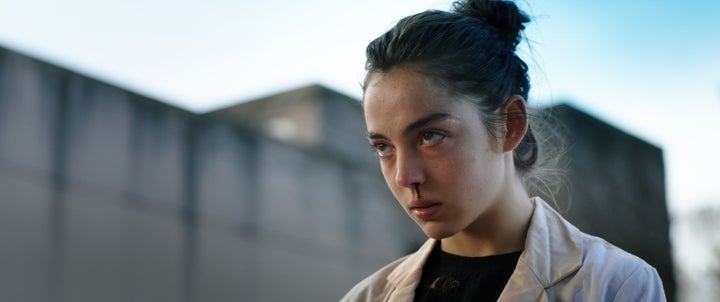
©2016 PETIT FILM/ROUGE INTERNATIONAL/FRAKAS PRODUCTIONS
While “Bones and All” has a sweetness to it, “Raw” is decidedly more frenetic in every way. Ducournau drops us into a more chaotic and compulsive world where Justine, faced with perpetual hazing and the intense newness of her situation, is barely getting by.
She has glimmers of common young adult life with casual sex, late-night parties and surprise exams. But she also has to contend with the mysterious cravings that she sometimes can’t even remember having. And she can’t really process it with anyone, even her sister, who is also a cannibal, so she just keeps going. She’s flailing and things are beginning to spiral.
But maybe this is what adulthood is, sometimes spinning out of her control.
Both “Bones and All” and “Raw” seem to ponder this as they follow their young, female protagonists on separate but similar journeys, not necessarily about cannibalism but about themselves. It’s a strange, dark and shockingly grounded path that might hit home for you.
“Bones and All” screened at the 2022 New York Film Festival and releases in theaters on Nov. 23.
